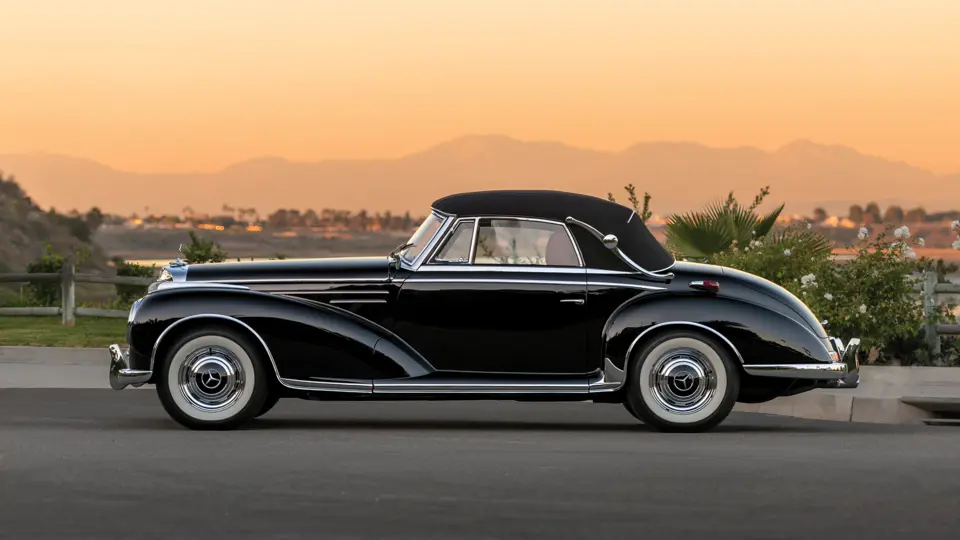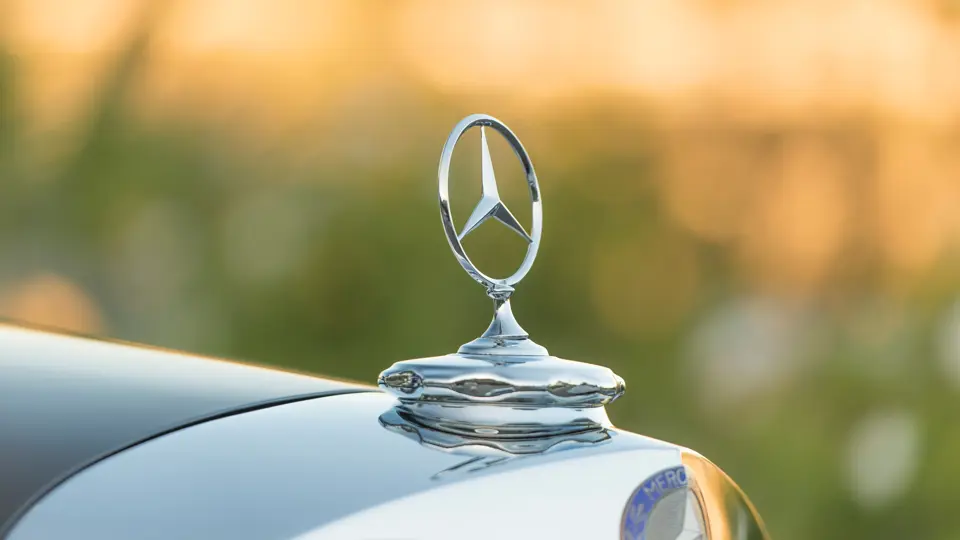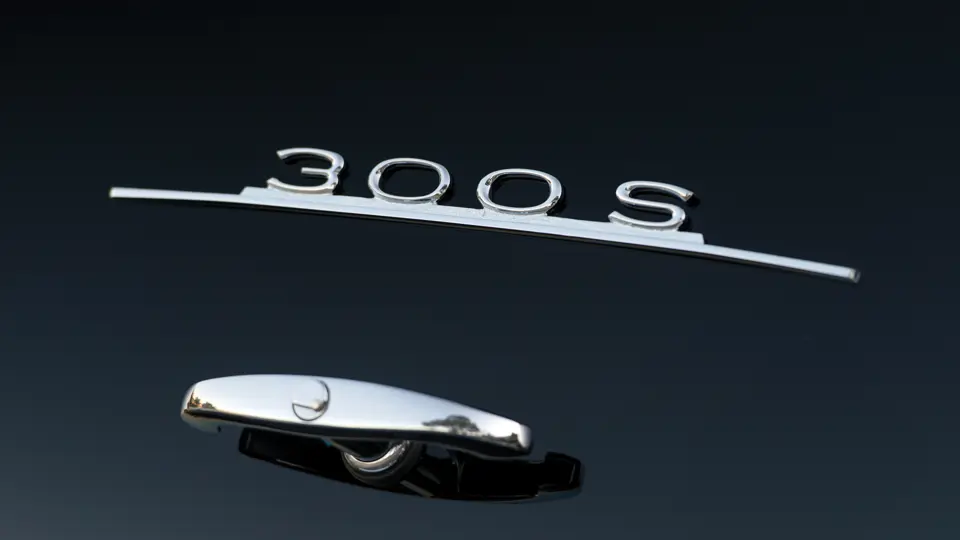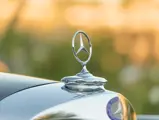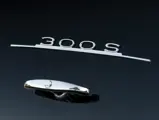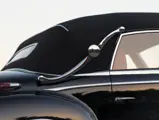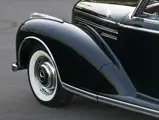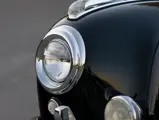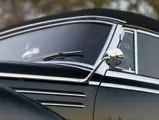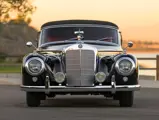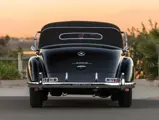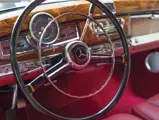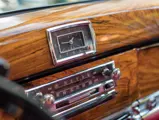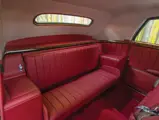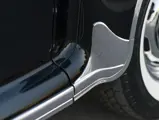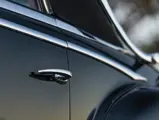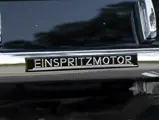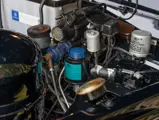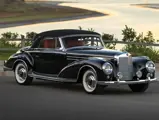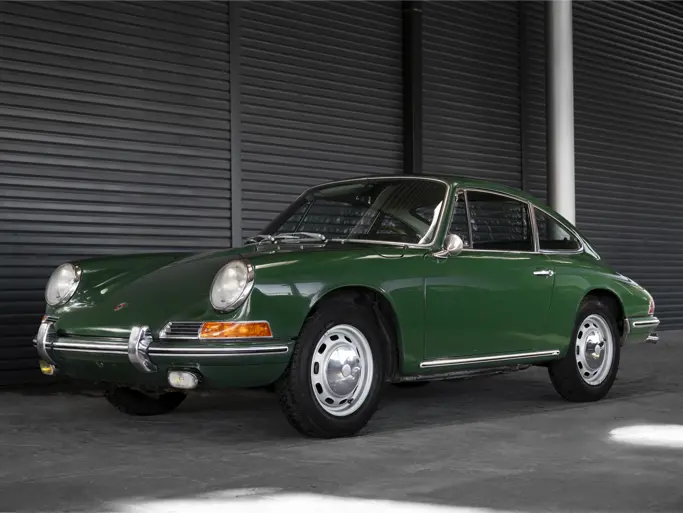175 bhp, 2,996 cc overhead-cam inline-six engine with Bosch mechanical fuel injection, four-speed manual transmission, independent front suspension with coil springs, rear swing axles with coil springs, and four-wheel hydraulic drum brakes. Wheelbase: 114.25 in.
Introduced in April of 1951 at the first-ever Frankfurt Motor Show and later that year in October at the Paris Motor Show, the 300 was to be the crown jewel in the post-war Mercedes-Benz crown. The 300 was initially offered in cabriolet and saloon models on the W186 chassis; however, the shorter and sportier W188 chassis would also be used to provide customers with roadster, coupe, and cabriolet versions. Featuring an independent suspension, the 300 provided outstanding comfort, even when cruising at a maximum speed of 100 mph.
In 1955, the engineers upgraded the engine using the Bosch fuel-injection system introduced on the 300 SL. Fuel was injected directly into the cylinders, but the fuel-injection pump was driven by a chain instead of a gear train. With a slightly milder cam than the sports cars, the M188 II engine produced 175 horsepower and 182 pound-feet of torque, a substantial increase over the 300 S.
With the new engine, denoted by the words “Einspritzmotor” (fuel-injected engine) on the rear bumper, the 300 Sc was introduced at the Frankfurt Motor Show in September 1955. Only a few other trim changes, including chromed cooling vents about each fender, perforated chromed disc wheels, and enlarged turn signals, distinguished the new model.
With the technical improvements, 145 units were sold during the remainder of 1955 and through 1956. However, even the impeccable craftsmanship and traditional lines were not enough to overcome potential buyers’ reluctance to accept the lack of air conditioning, automatic transmission, and powered amenities common in competitive luxury cars. Only 52 units would be sold in 1957 and three more in 1958 after production ended. In total, only 49 cabriolets, 53 roadsters, and 98 coupes were sold, making these models among the rarest dealer-ordered automobiles ever produced by Mercedes-Benz.
CHASSIS NUMBER 188.013.6500145
The cabriolet offered here recently underwent a complete restoration by specialists in California, where the current owner acquired it following long-term ownership by two Pacific Coast residents. The fenders, doors, trunk, and hood were all removed and the body stripped down to bare metal prior to painting. Matching the build sheet, the Black (DB 114) finish was applied in six stages, then sanded and buffed to produce a rich finish. In addition to the stunning black livery, the exterior and a large majority of interior chrome were redone with triple plating; the original rims, hubcaps, radiator shell and cap, door handles, and door lock cylinder were re-chromed by the same individual to ensure a consistent finish. Some parts were replaced with NOS components, such as the 300 S badge on the rear and the correct convex Mercedes-Benz stars.
The correct Red (1079) leather interior is fully new and hand-stitched for a precision fit, as is the top pad and headliner, while the red braided leather roof handles are original and remain in good condition. Further interior work was also completed on the steering wheel, ashtray, and other accessories.
The engine received a comprehensive examination, including disassembly, inspection, and servicing; work was also completed on the wire harness, ensuring that all electrical components are in proper working order throughout. The horns and sealed-beam headlamps were disassembled and restored to their proper working condition.
The car is offered with a variety of ultra-desirable additions, including the original keys, luggage set, and tool kit. It is a scarce opportunity to acquire a high-quality example of one of the rarest post-war Mercedes-Benz vehicles and, arguably, the pinnacle of the 300’s evolution.

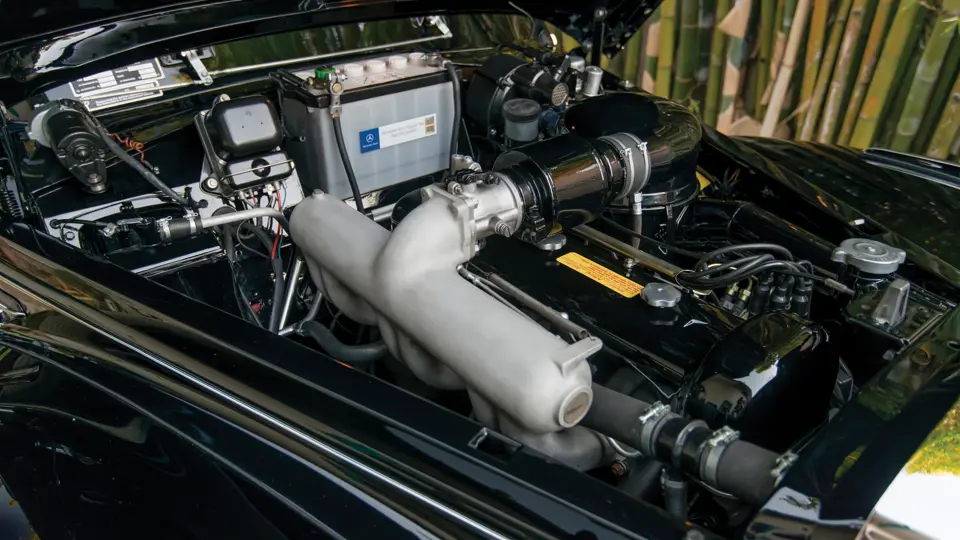


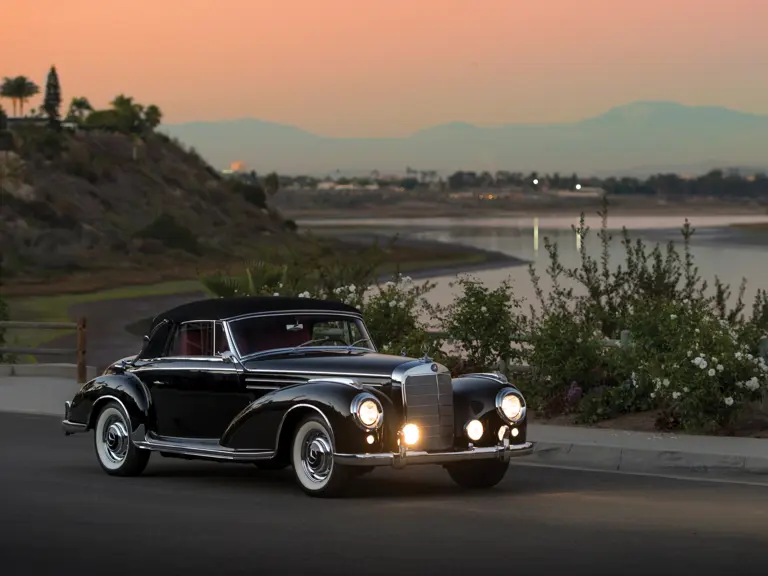
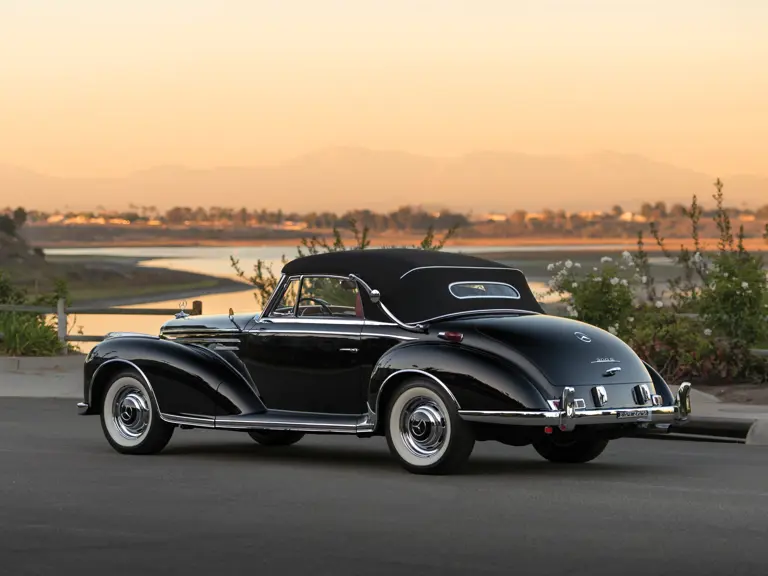
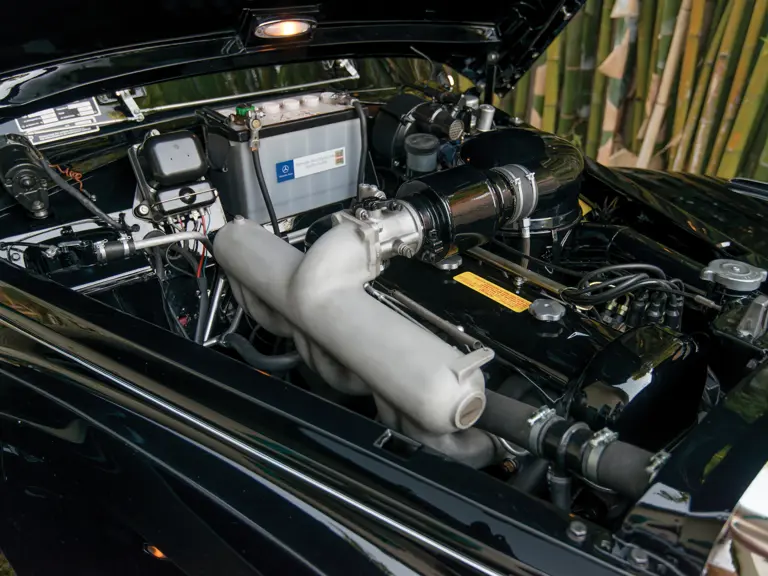
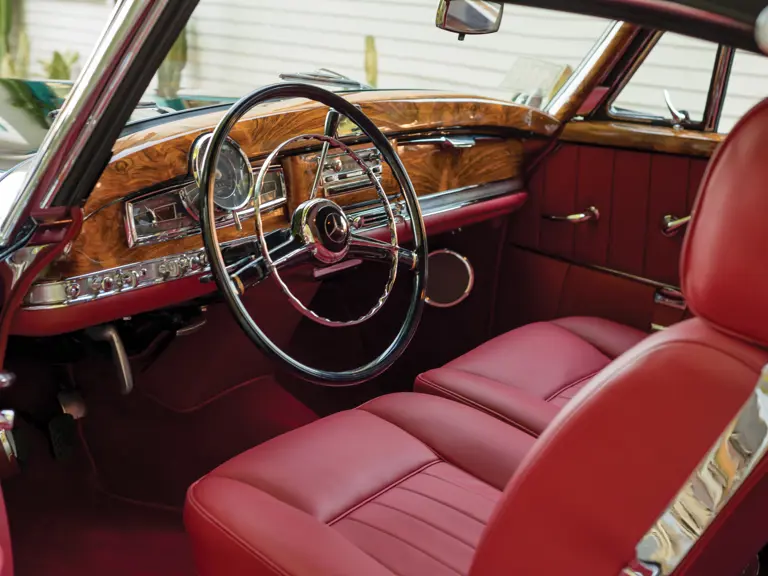
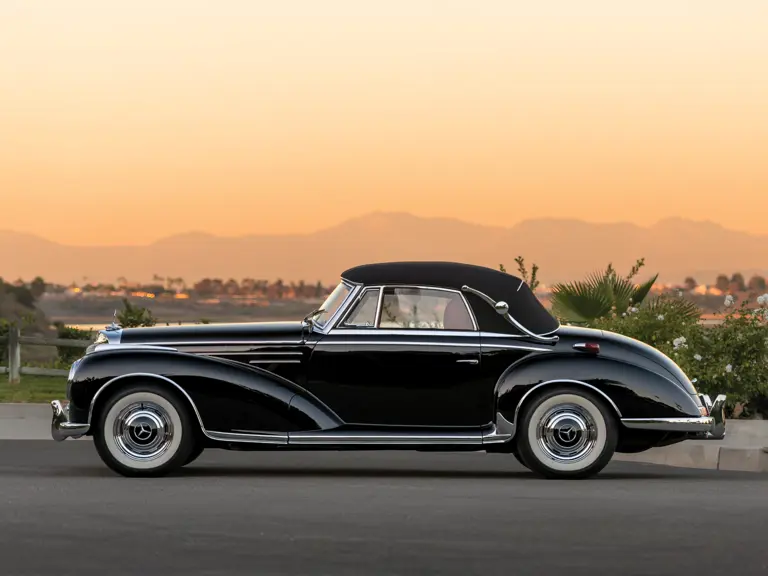
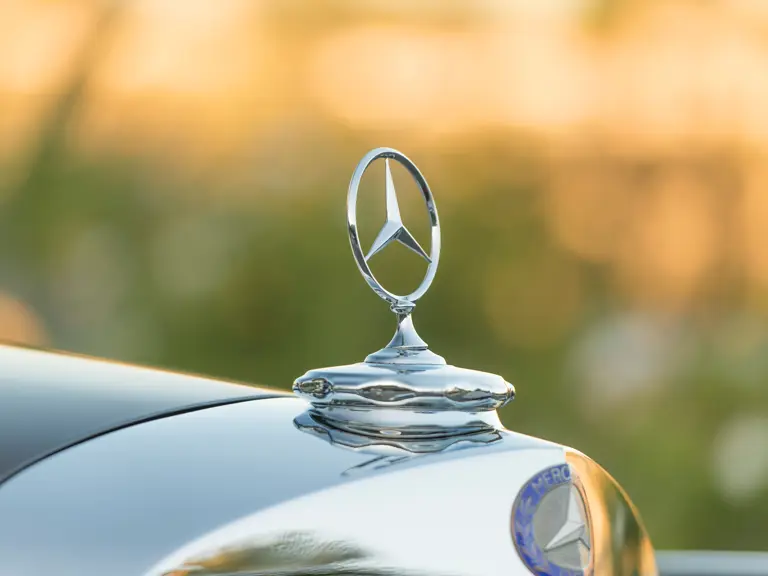
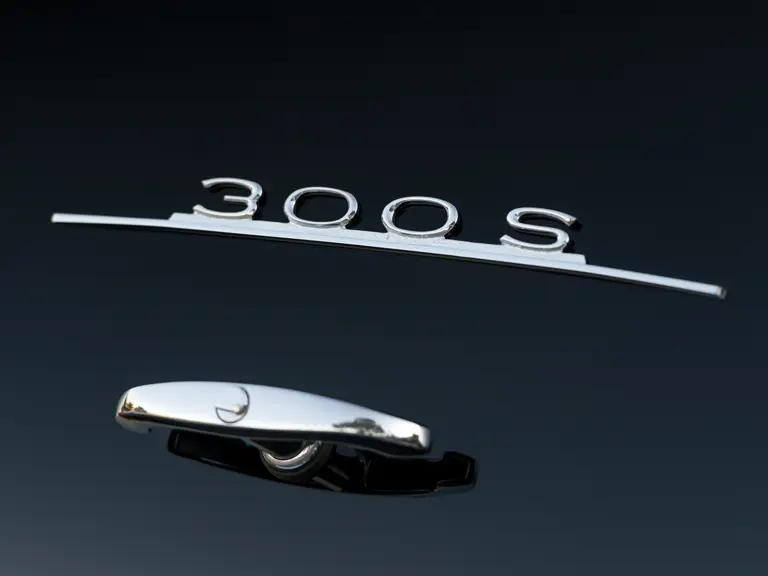




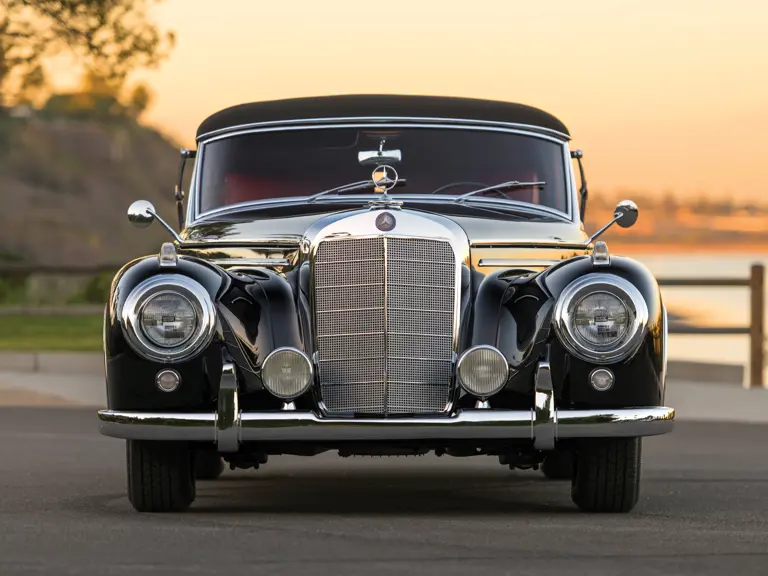
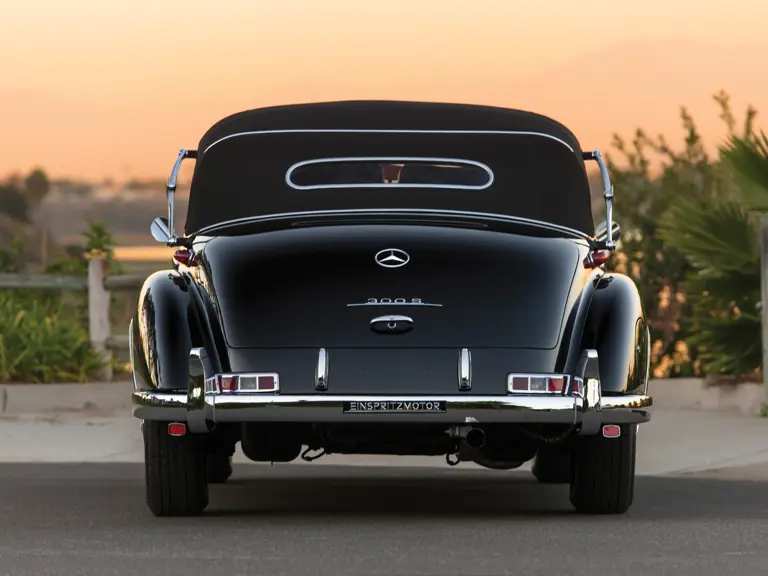
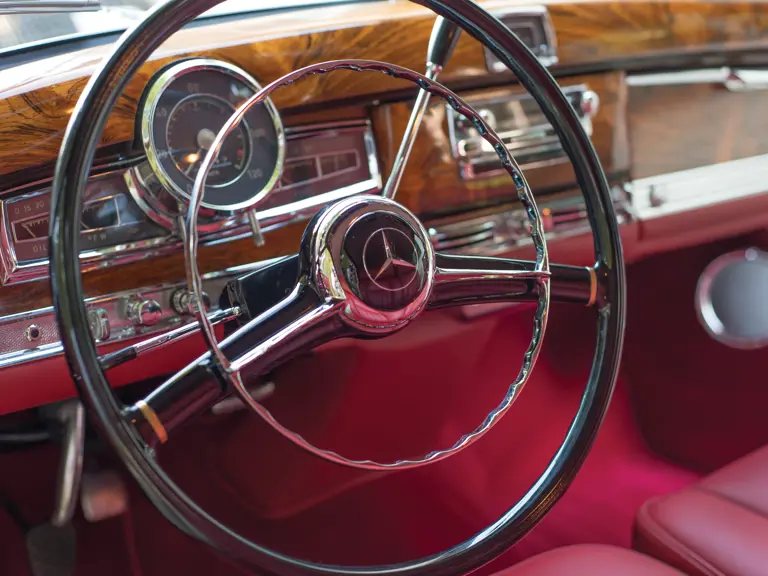
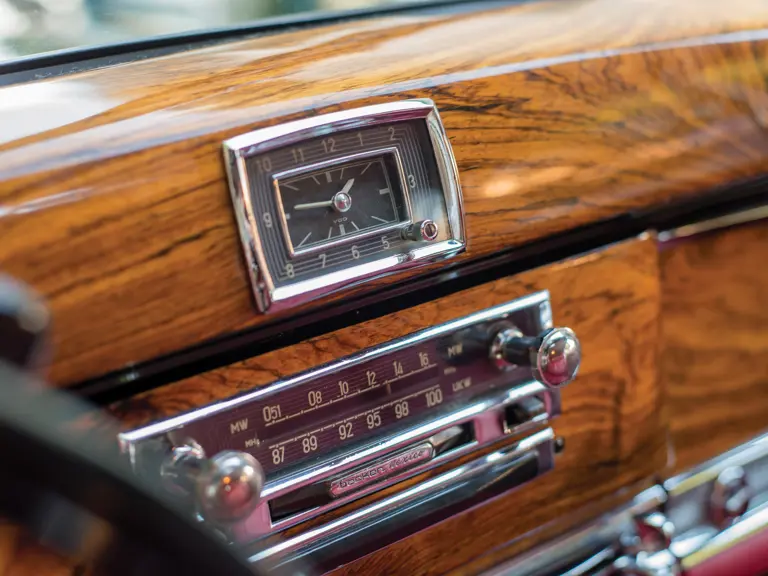
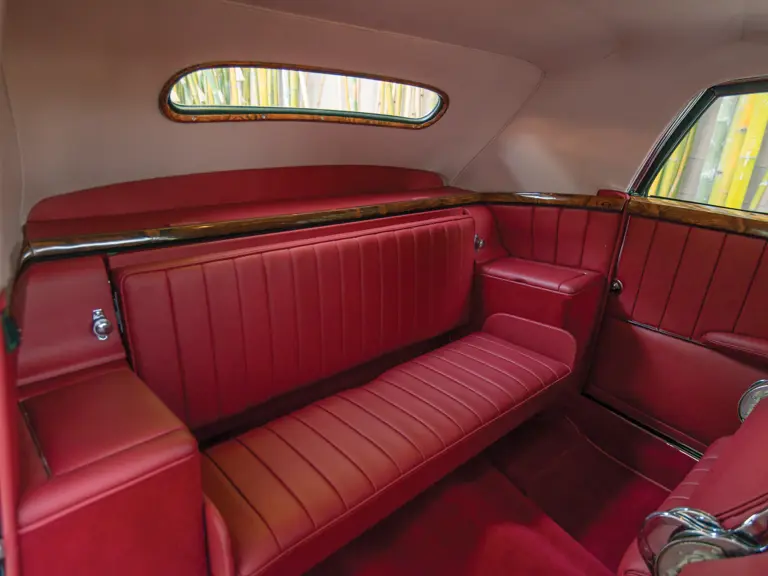
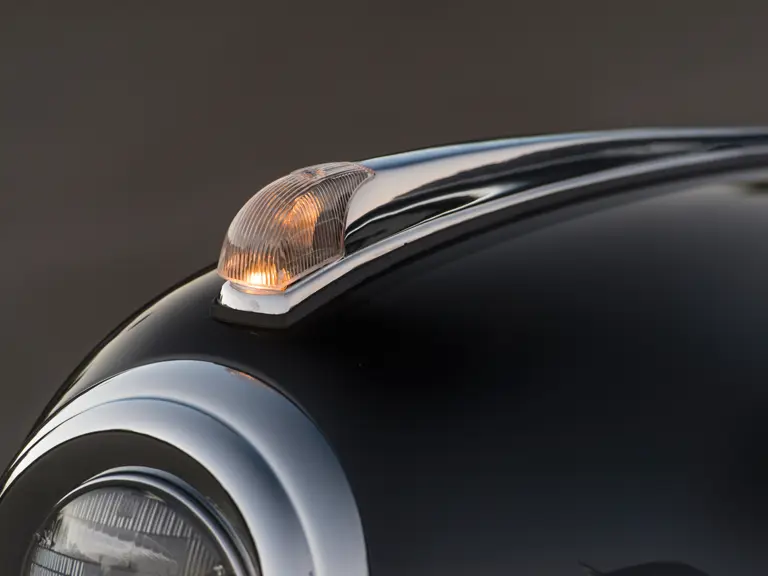
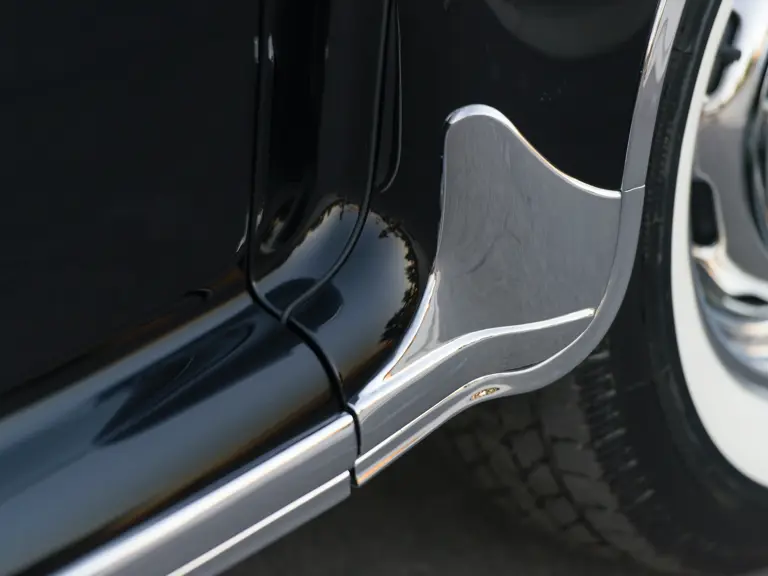
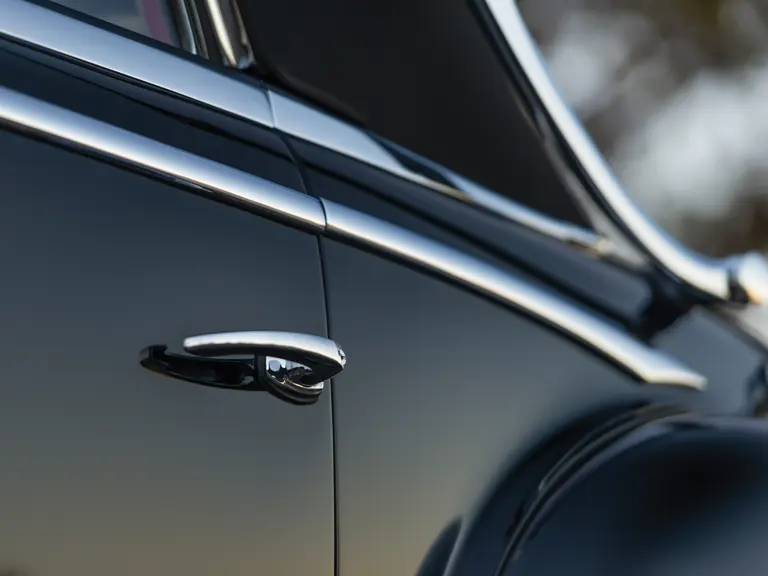
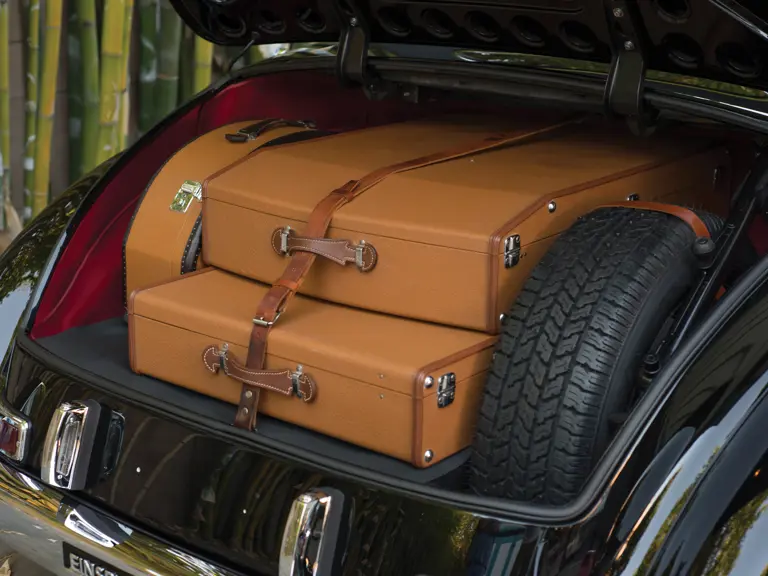
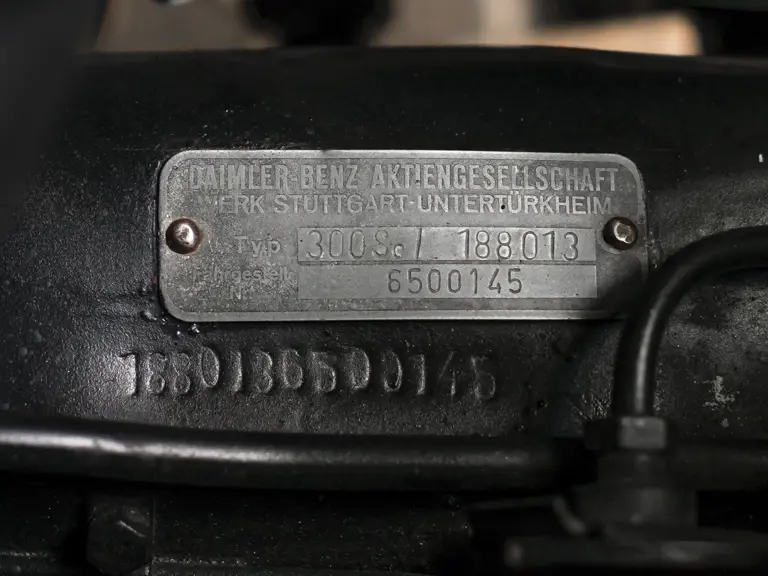
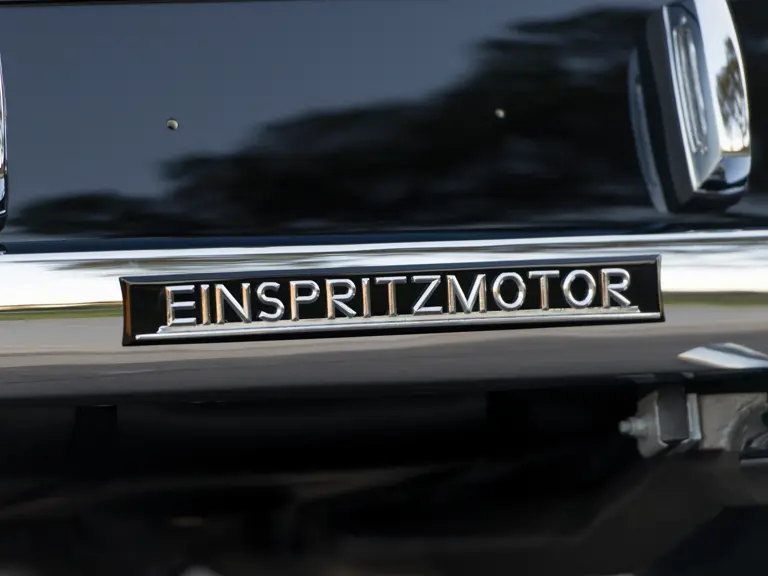
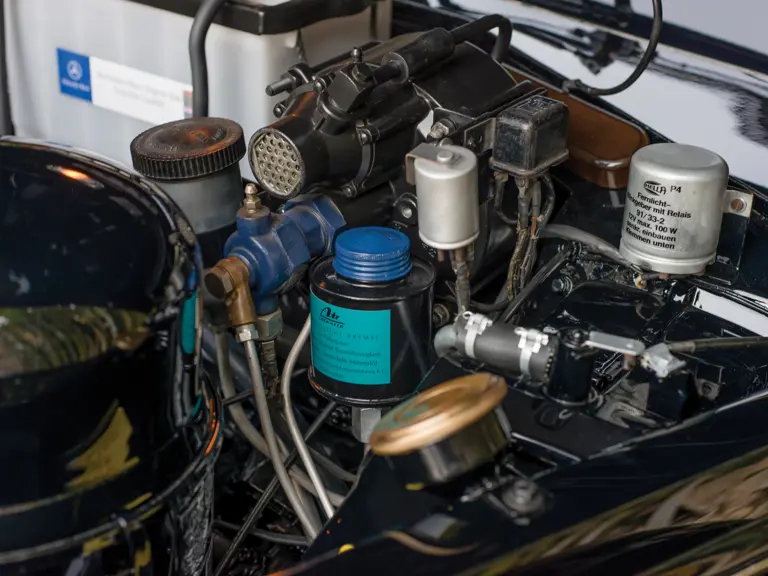
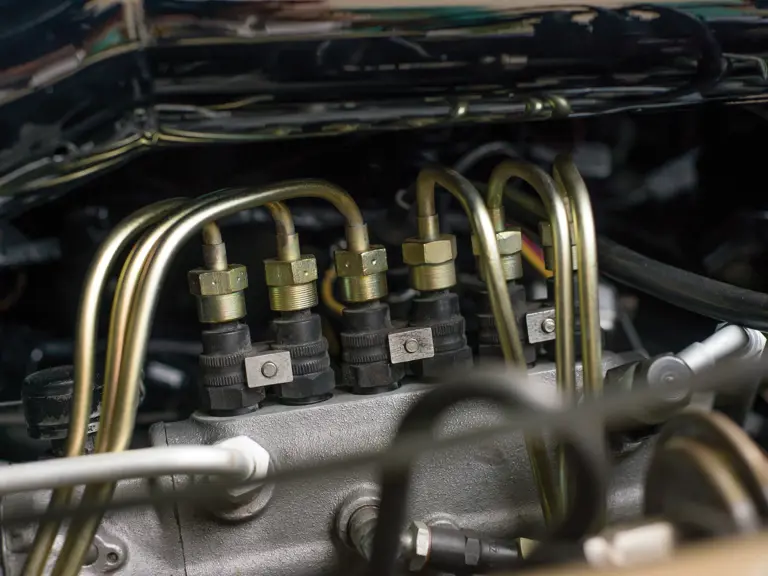
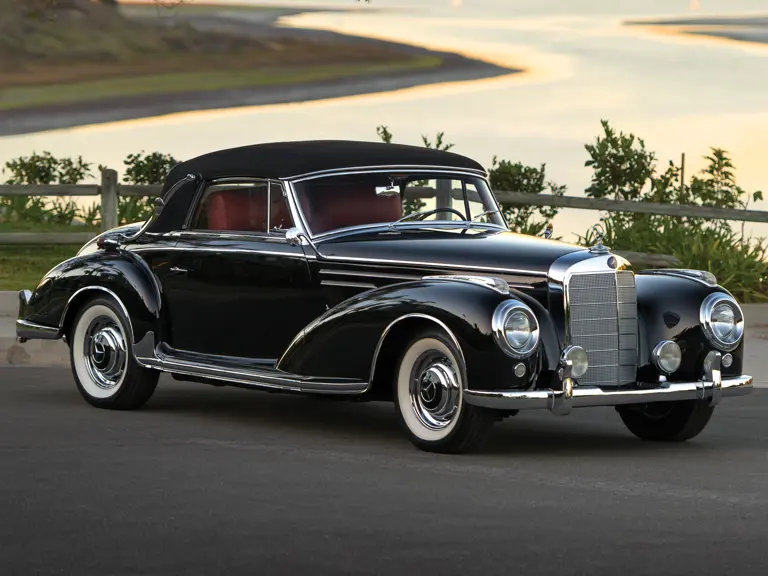
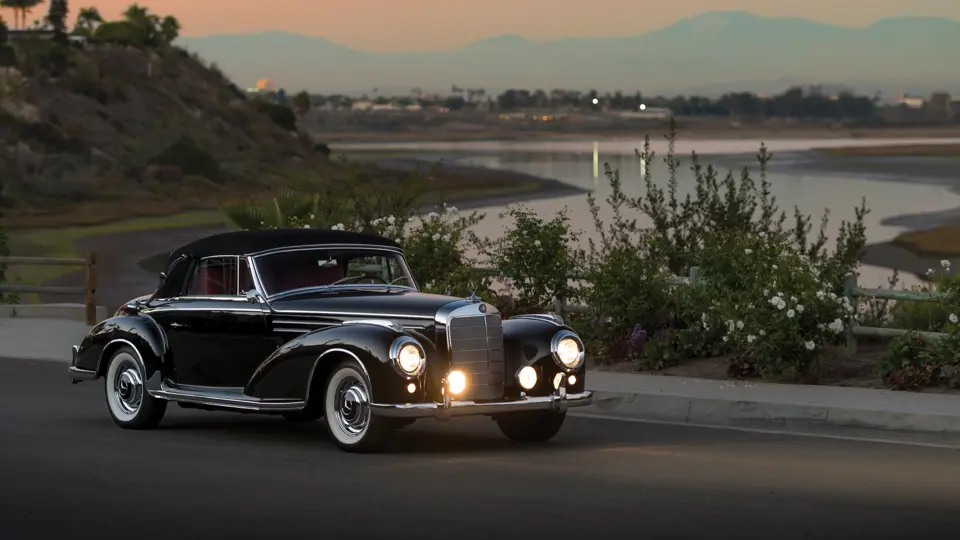
 | Phoenix, Arizona
| Phoenix, Arizona
